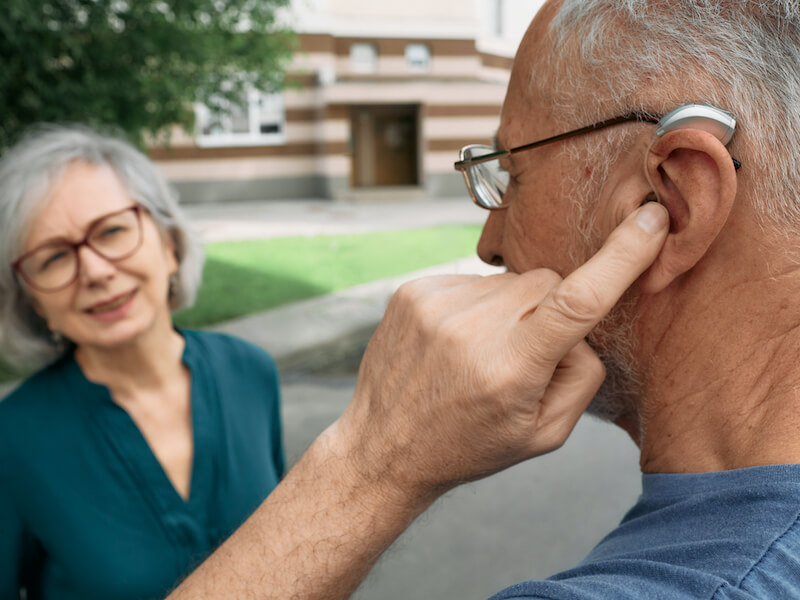
Have you ever been watching your favorite Netflix movie when your internet abruptly disappears? You sit and watch that spinning circle instead of finding out who won that cooking competition. All you can do is wait around for it to come back. Is it your internet provider, modem, router, or maybe it will simply come back on its own? It’s not a very good feeling.
Technology can be tremendously frustrating when it doesn’t work properly. Your hearing aids certainly fall into this category. When they’re functioning correctly, hearing aids can help you stay connected with the ones you love and better hear co-workers when they talk to you.
But your symptoms of hearing loss can suddenly become extremely frustrating when your hearing aids stop working. You’ve been let down by the technology you count on. Why would your hearing aids just stop working? So what can you do? Here are the three common ways your hearing aids can malfunction and how to troubleshoot and identify them.
Hearing aids can often have three common issues
Even though hearing aids are complex technology, individuals might encounter three common issues with them. Here’s what could be causing those issues (and what you can do to fix them).
Whistling and feedback
So, perhaps you’re attempting to have a chat with your family or watch your favorite show and you start to notice a dreadful whistling sound. Or perhaps you notice a bit of feedback. And so you think, “Why do I hear whistling in my hearing aids? This is odd”.
Whistling and feedback can be caused by these possible issues:
- Your hearing aids might not be sitting in your ears correctly. Try removing them and putting them back in. If the fit isn’t correct you may need to come see us so we can help you get a better fit.
- The functionality of your hearing aid can be affected by earwax buildup in your ear canal. This is a rather common one. That includes causing your hearing aids to whistle or feedback. If possible, you can attempt to clean some earwax out of your ear or consult with us about the best method to do that (do not use a cotton swab).
- The tubing that connects the hearing aid with the earmold, on behind-the-ear models, can occasionally become compromised. Try to examine this tubing as closely as possible and make sure nothing is loose and the tube does not appear damaged.
Depending on the root cause of the feedback, we can help you resolve these issues if you can’t fix them on your own.
No sound coming from your hearing aids
Your hearing aids should make, well, sound. That’s their principal function! Something has definitely gone wrong if you can’t hear any sound coming from your hearing aid. So what could cause hearing aids to drop all sound? Well, there are a few things:
- Power: Look, we’ve all forgotten to turn the hearing aids on before. Check for this first. This potential issue can then be eliminated..
- Earwax buildup: Yup, earwax strikes again. Have a close look to see if you find any earwax on the microphone or speakers. You want to make certain the device is good and clean.
- Batteries: Be sure your batteries are fully charged. And even rechargeable batteries should be swapped out from time to time.
- Your settings: Scroll through the personalized settings if your device includes them. It’s feasible your hearing devices are on the wrong custom setting (so maybe your hearing aids think you’re in a concert hall instead of around the kitchen table). The sound you’re hearing could be off as a consequence.
If these steps don’t correct your problems, we might have the solution. We’ll be able to help you find out the next steps, and whether maintenance, repair, or replacement is required.
When you have your hearing aids in, your ears hurt
Maybe your hearing aids are fine functionally but they hurt when they’re in your ears. And you’re probably wondering why your hearing aids would make your ears hurt. You’re not as likely to use your hearing aids every day if they hurt your ears. So, why do they ache?
- Fit: The most obvious issue can be the fit. After all, most hearing aids work best when they fit tightly. Which means that there can sometimes be discomfort involved in a poor fit. Some hearing aid models can be fit to the distinct shape of your ears. Over the long run, you will have fewer problems if you have a snug fit. We will be able to help you get the best possible fit from your devices.
- Time: Usually, it just takes a little while to get accustomed to your hearing aids. How long it takes will depend on the individual. It’s worth talking about when you buy your hearing aids so you have a realistic concept of how long it might take you to get comfortable with your devices. Also, speak with us about any discomfort you might be experiencing.
Take your new hearing aid out for a test ride
One of the best ways to avoid possible problems with hearing aids is to take them for a bit of a test drive before you commit. Most of the time we will have loaner pairs for you to try out before you make a decision.
As a matter of fact, we can help you determine the best kind of hearing aid for your needs, adjust the fit to match your ears, and help you take care of any extended issues you might have with your devices. In other words, when your devices stop working, you’ll have a resource that can help!
And that’s a lot more than you will get from an over-the-counter hearing aid!